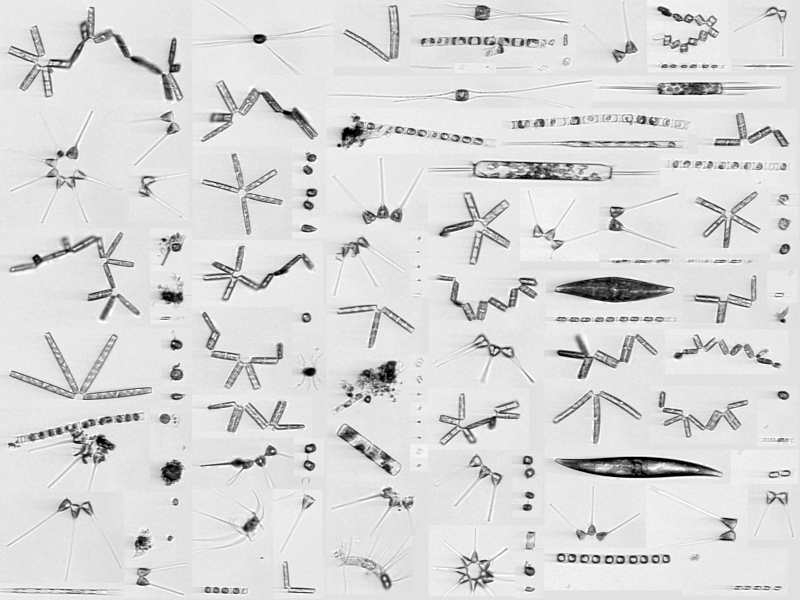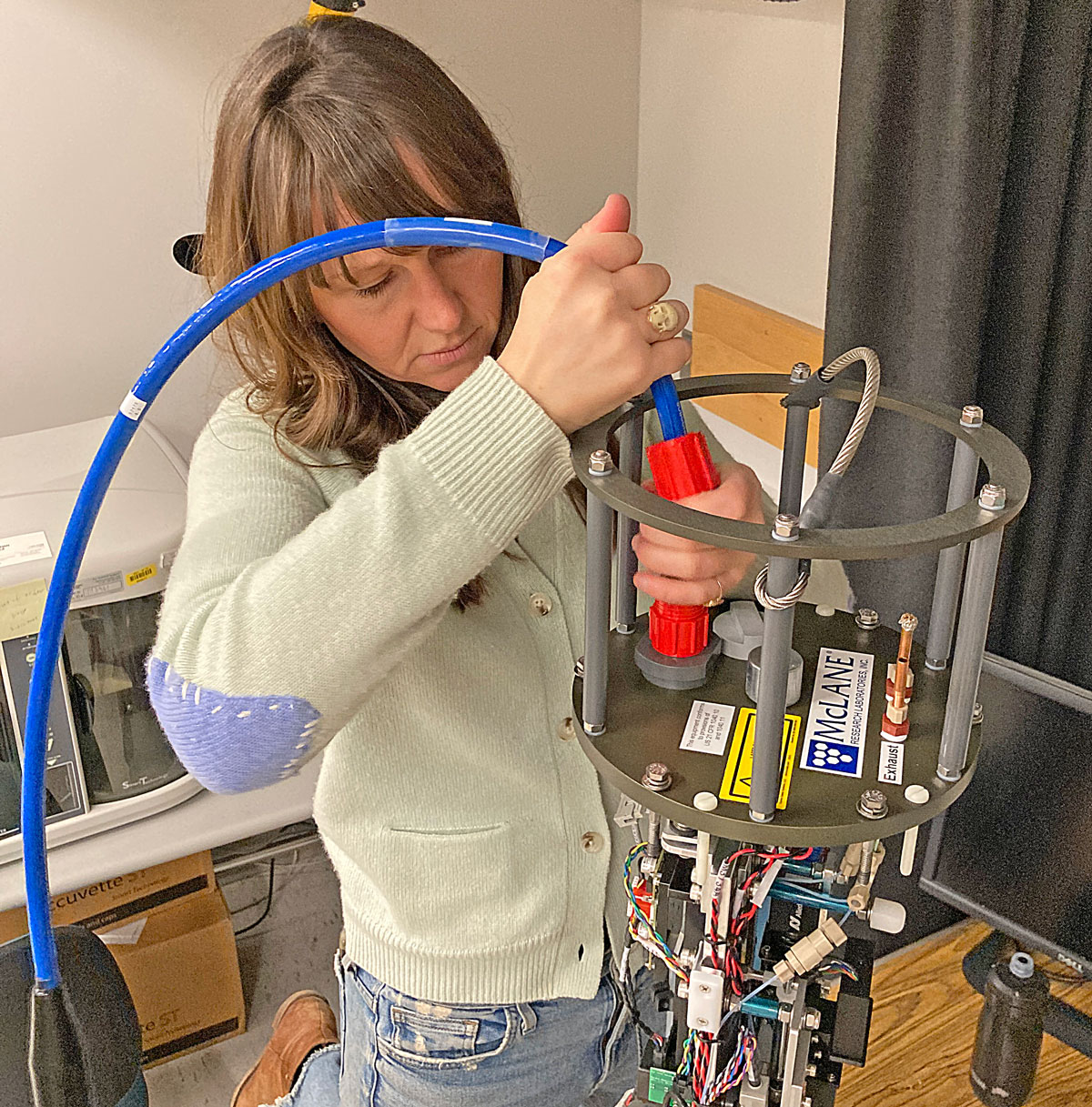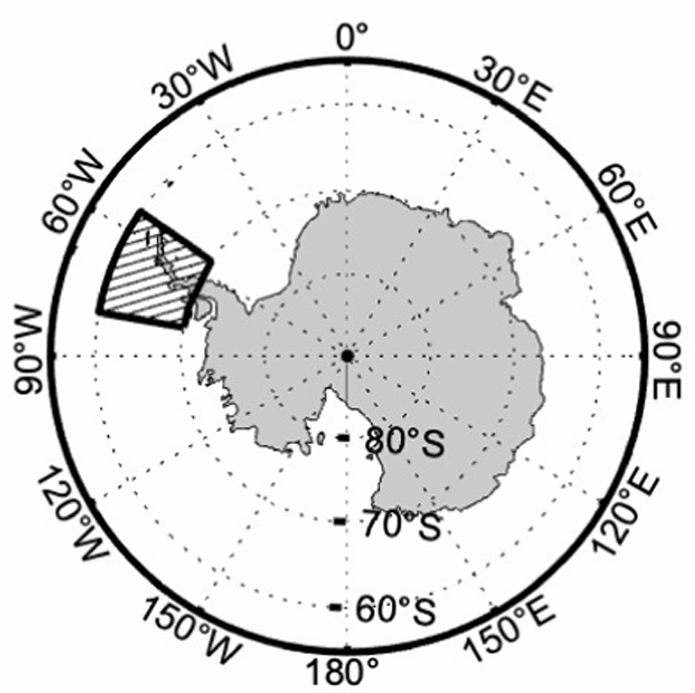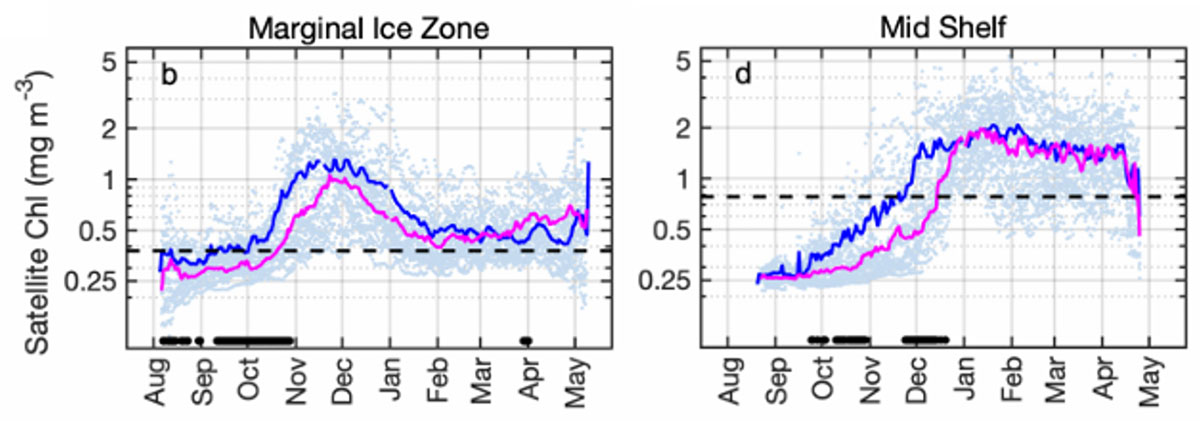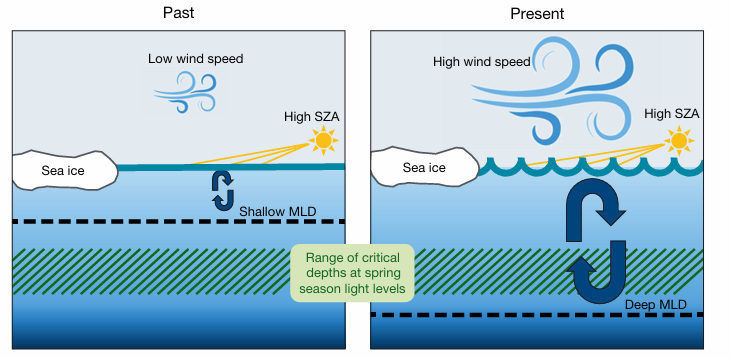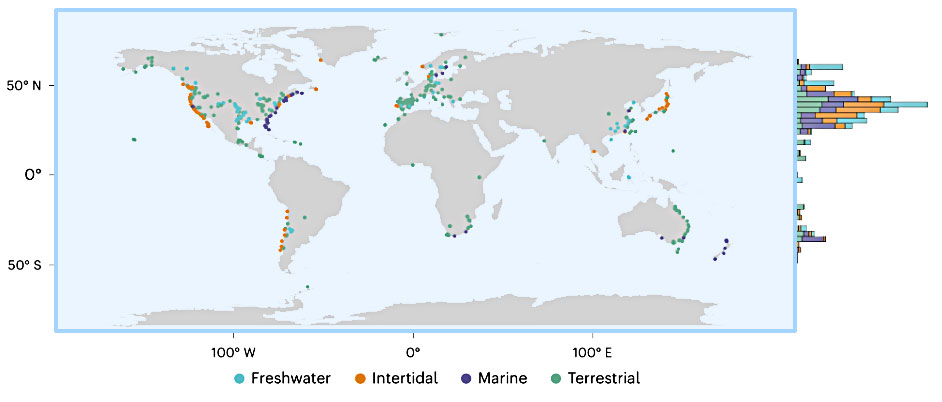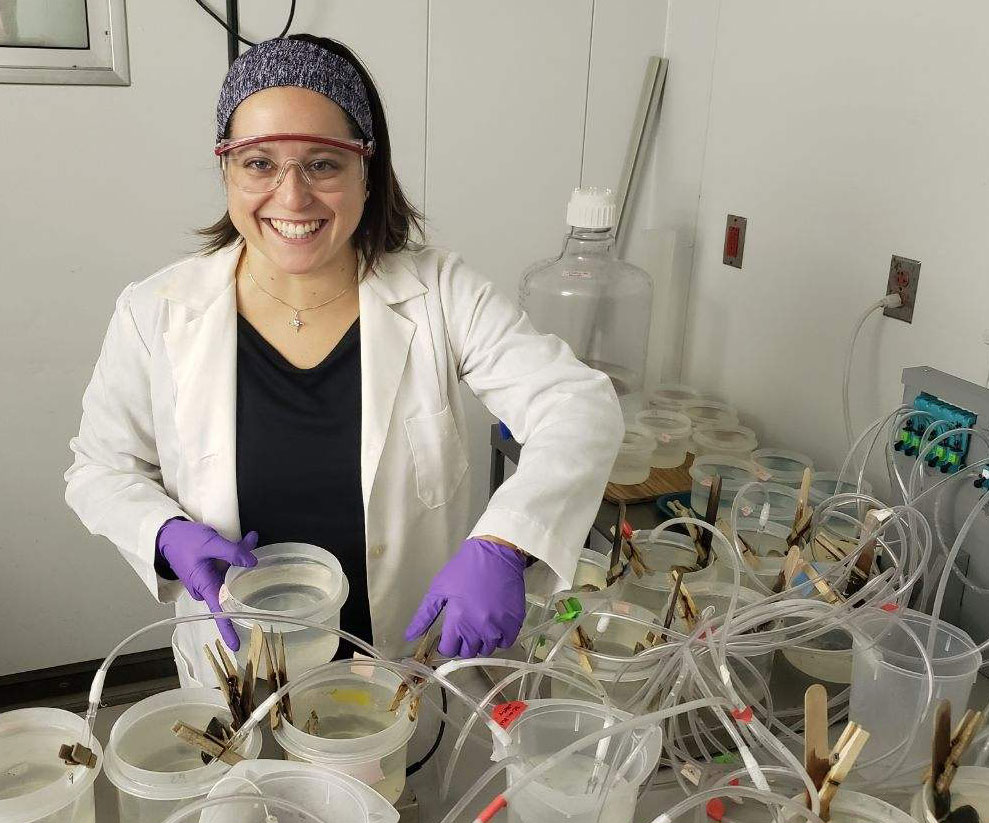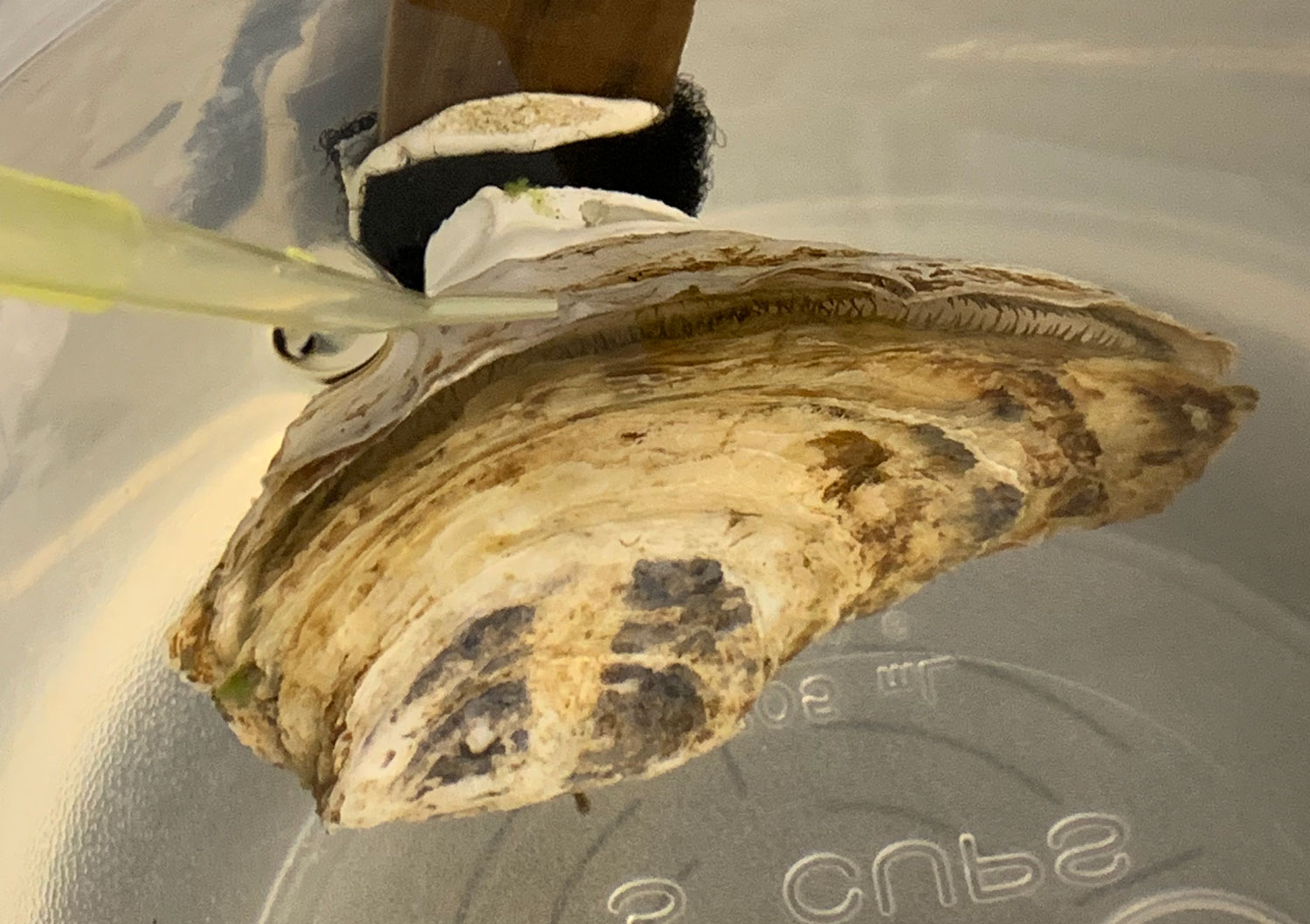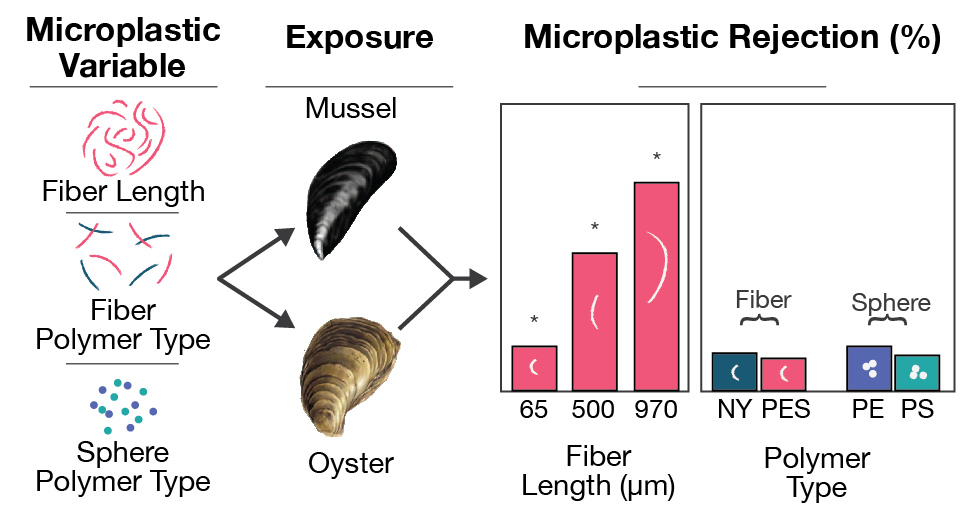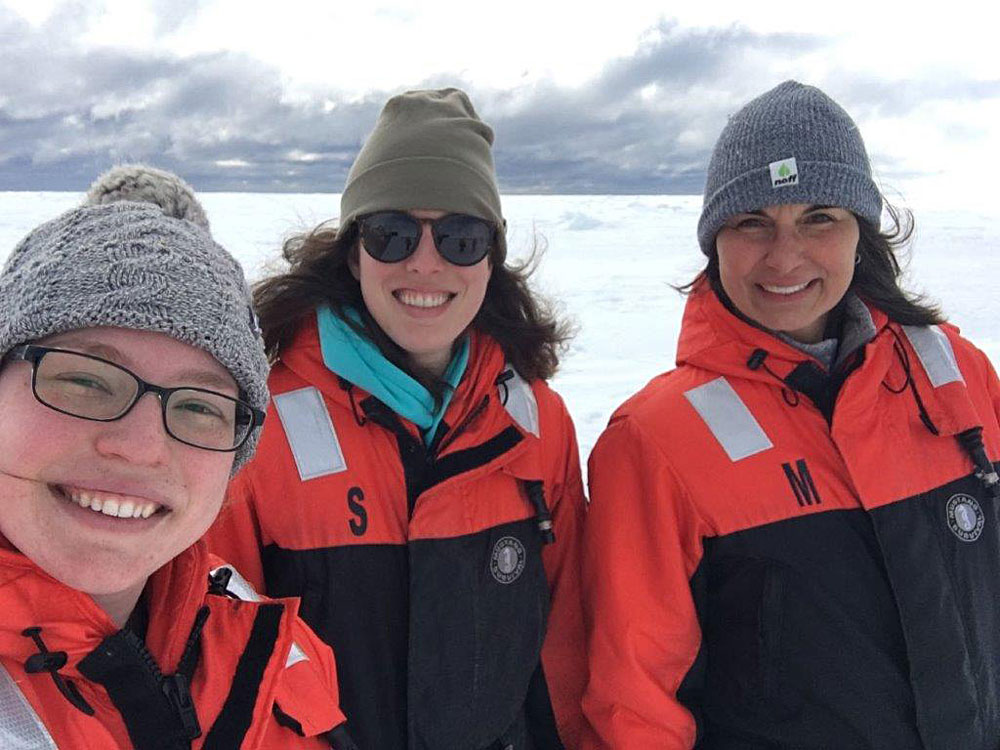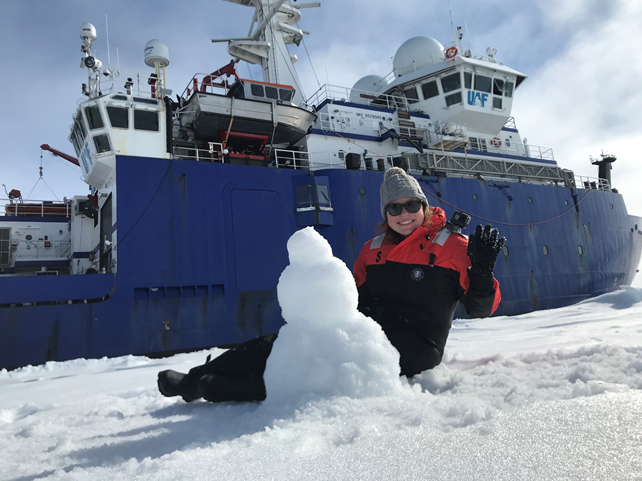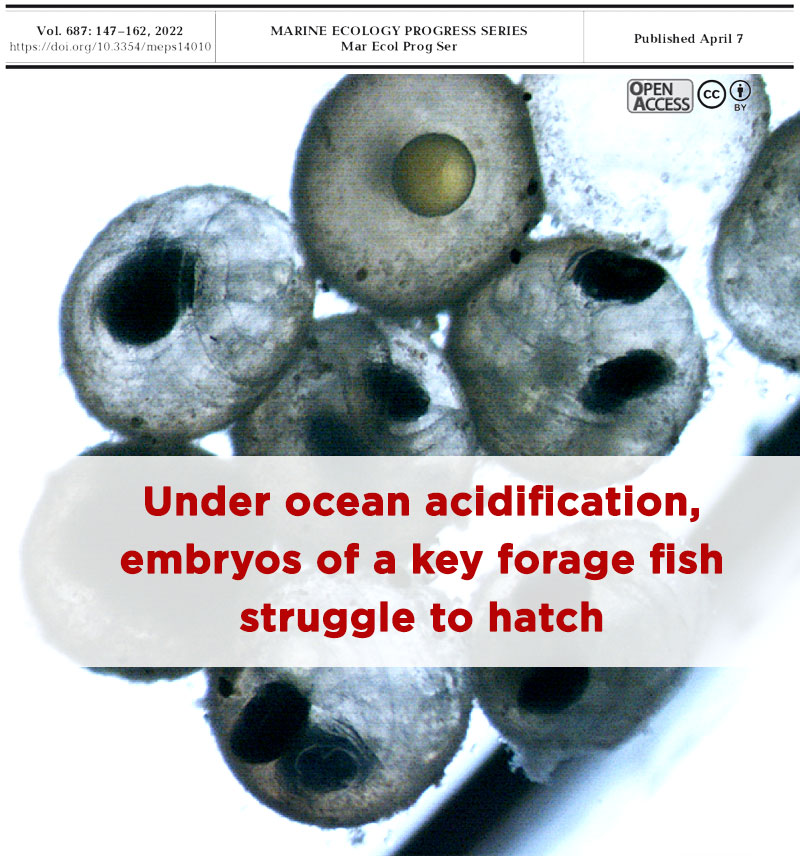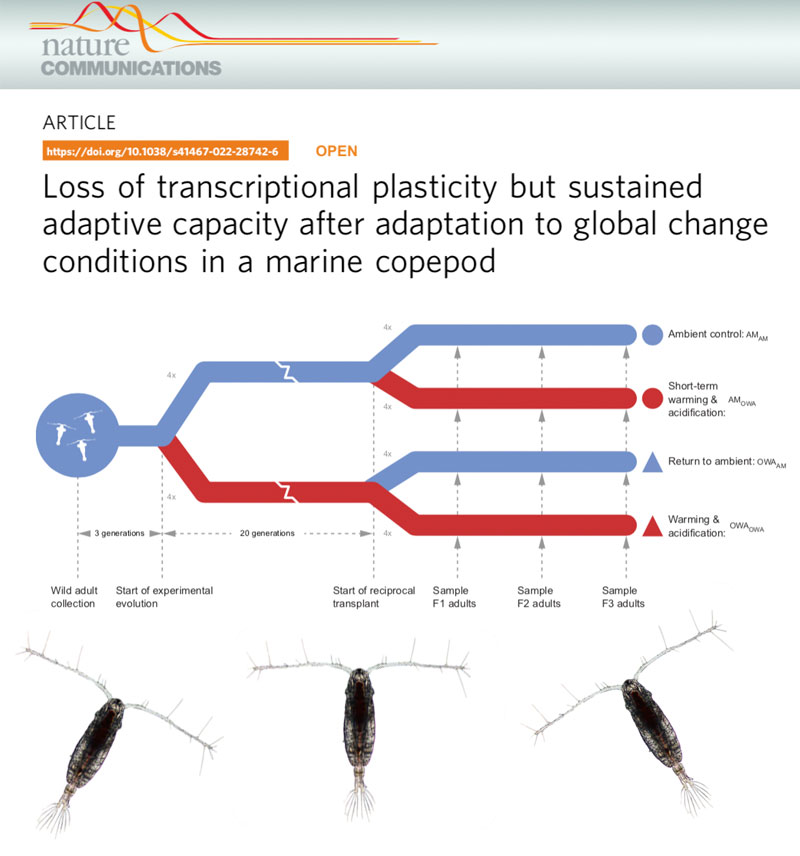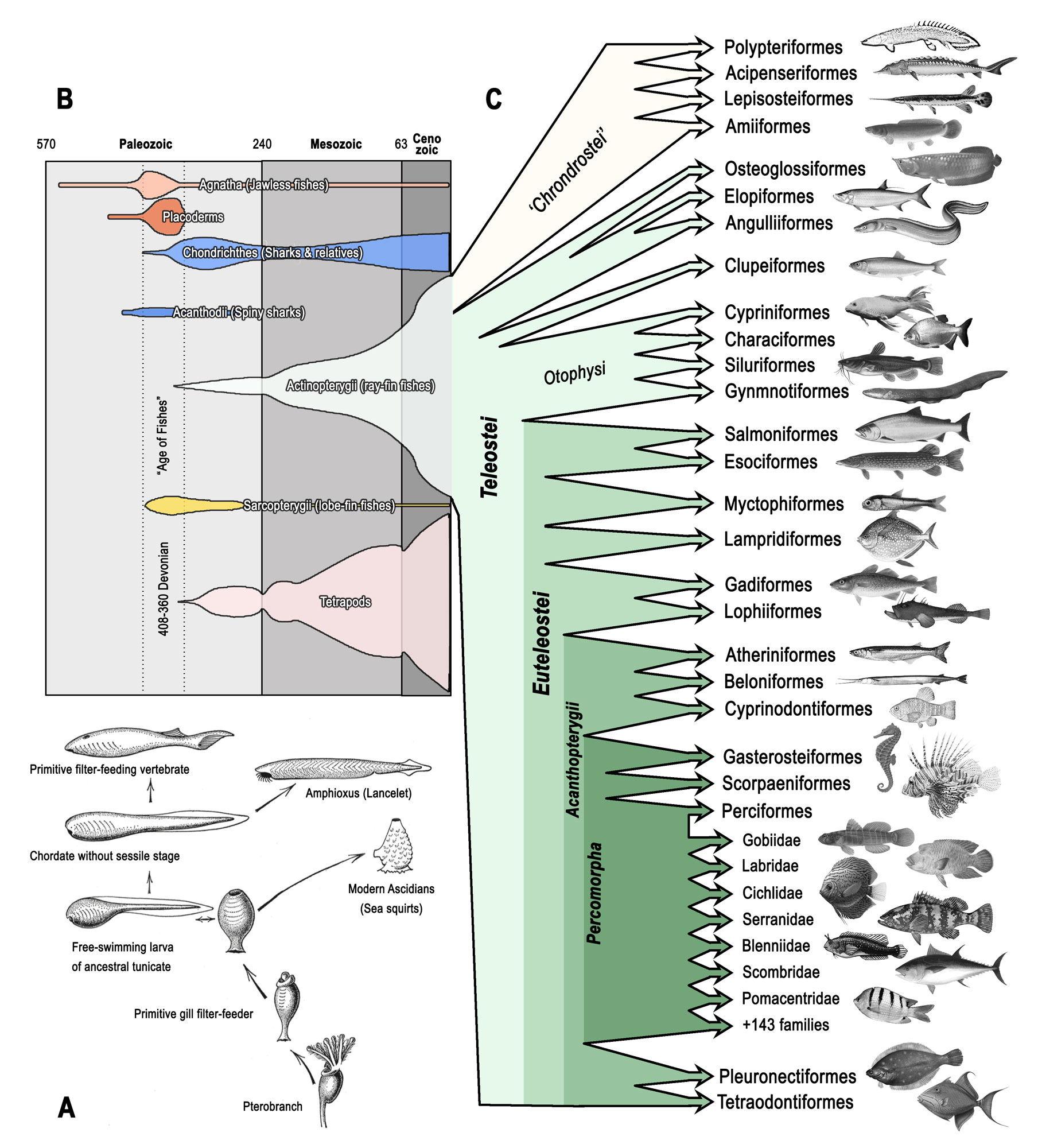Publications:
Prof. Hans Dam
Prof. Dam co-authored a study about the negative effects of marine heatwaves on copepods. The authors found that acclimation (“getting used to”) and parental effects (“the fate of the children depends on the experience of the parents”) mitigate the negative effects of heat waves on the fitness of two important copepod species.
Sasaki, M.C, M. Finiguerra, H.G. Dam. 2024. Seasonally variable thermal performance curves prevent adverse effects of heatwaves. Journal of Animal Ecology 2024;00:1–11. DOI: 10.1111/1365-2656.14221
Graduate student Samantha Rush and Professor Penny Vlahos
This study reports on how sea ice in the Arctic Ocean incorporates and stores boron as it forms, reducing the amount of boron from under ice waters.
Rush, S., Vlahos, P., Lee, C.-H., Lee, K., Barrett, L. J. Boron to salinity ratios in the Fram Strait entering the Central Arctic: The role of sea ice formation and future predictions. Marine Chemistry. 267:104463. https://doi.org/10.1016/j.marchem.2024.104463
DMS alumnus Max Zavell and Professor Hannes Baumann
Zavell and Baumann show that the embryos and larvae of an abundant grouper species in Long Island Sound are unaffected by even very high CO2 levels in the water.
Zavell, M.D. and Baumann, H. (2024) Resiliency of Black Sea Bass, Centropristis striata, early life stages to future high CO2 conditions. Environmental Biology of Fishes 107:677–691
Research Prof. Paola Batta-Lona and Prof. Ann Bucklin
This morphological and molecular analysis revealed the diet differences of 7 mesopelagic fish species, showing the importance of gelatinous prey.
Bucklin, A., Batta-Lona, P.G., Questel, J., McMonagle, H., Wojcicki, M., Llopiz, J.K., Glancy, S., Caiger, P.E., Francolini, R., Govindarajan, A., Thorrold, S.R., Jech, M., Wiebe, P.H. (2024). Metabarcoding and morphological analysis of diets of mesopelagic fishes in the NW Atlantic Slope water. Front Mar Sci. 11:1411996. https://doi.org/10.3389/fmars.2024.1411996
Batta-Lona also published a study on the diet diversity of three salp species, which showed a wide variety of prey, broadening our understanding of trophic pathways in the mesopelagic food web.
Batta-Lona, P.G., Gardner, K., Questel, J.M., Thorrold, S.R., Llopiz, J.L., Wiebe, P.H., Bucklin, A. (2024). Salps in the NW Atlantic Slope Water: metabarcoding and compound-specific stable isotope analysis of diet diversity and trophic interactions. Mar Biol 171, 233. https://doi.org/10.1007/s00227-024-04535-x
Batta-Lona further published a study that identified parrot fish larvae via morphology and DNA sequences.
Morales‐Pulido, J. M., Galindo‐Sánchez, C. E., Jiménez‐Rosenberg, S. P. A., Batta‐Lona, P. G., Herzka, S. Z., Arteaga, M. C. (2024). A molecular approach to identify parrotfish (Sparisoma) species during early ontogeny. Journal of Fish Biology 1-10 https://doi.org/10.1111/jfb.15921
Batta-Lona was also involved in the MetaZooGene Atlas and Database (MZGdb) provides DNA sequences for multiple genes, with unique capacity for searches by ocean region.
O'Brien, T., Blanco-Bercial, L., Questel, J.M., Batta-Lona, P.G., Bucklin, A. (2024). MetaZooGene Atlas and Database: Reference Sequences for Marine Ecosystems. Methods in molecular biology 2744: 475-489. https://doi.org/10.1007/978-1-0716-3581-0_28
Prof. Peter Auster
Prof. Auster used diver surveys of reef fish off Florida to map predation risk to coral eating fishes.
Auster, P.J. and M.E. Cullerton. 2024. Can variation in fish predator density and the Landscape of Fear facilitate coral restoration success? Reef Encounter 39:48-50.
In another study, Prof. Auster and colleagues argue that the term "destructive fishing" is used in international agreements and guidance without agreement on what this term means.
McCarthy, A.H., D. Steadman, H. Richardson, J. Murphy, S. Benbow, J.I. Brian, H. Brooks, G. Costa-Domingo, C. Hazin, C. McOwen, J. Walker, D. Willer, M. Abdi, P.J. Auster, ..., N. Mukherjee. 2024. Destructive fishing: An expert‐driven definition and exploration of this quasi‐concept. Conservation Letters, e13015. https://doi.org/10.1111/conl.13015
Post-doctoral researcher Danielle Freeman
Dr. Freeman published an article together with colleagues at WHOI that forecasts the effects of sunlight-driven chemistry during oil spills.
Freeman, D. H.; Nelson, R. K.; Pate, K.; Reddy, C. M.; Ward, C. P. (2024) Forecasting Photo-Dissolution for Future Oil Spills at Sea: Effects of Oil Properties and Composition. Environ Sci Technol. 58: 15236-15245 https://doi.org/10.1021/acs.est.4c05169
Research Scientist Ebru Unal (Mystic Aquarium):
Dr. Unal showed that skin samples can reveal relevant differences between endangered and stable beluga whale populations.
Unal, E., V. Singh, R. Suydam, C.E. Goertz, and T.A. Romano. (2024). Comparative skin transcriptome analysis as a potential tool to investigate intra- and inter-population differences in belugas. Frontiers in Marine Science: Marine Conservation and Sustainability. 11:1282210
Research Scientist Tracy A. Romano (Mystic Aquarium):
Aerial photogrammetry and lipid analyses can be used to describe the body condition of wild endangered St. Lawrence Estuary beluga whales.
Sherill, M., A. Bernier-Graveline, J. Ewald, Z. Pang, M. Moisan, M. Marzeliere, M. Muzzy, T.A. Romano, R. Michaud, and J. Verreault. (2024). Scaled mass index derived from aerial photogrammetry associated with predicted metabolic pathway disruptions in free ranging St. Lawrence Estuary belugas Frontiers in Marine Science. 11:1360374.
Danielle A. Lavoie (Mystic Aquarium):
This study provided insight into the detection of the invasive nematode parasite A. crassus using identification monitorting methods that allow for the survival of the host A. rostrata (the American eel).
Lavoie, D.L., Oliveira, K. (2024). Non-Lethal Detection of the Invasive American Eel Parasite Anguillicoloides crassus. Diseases of Aquatic Organisms.
